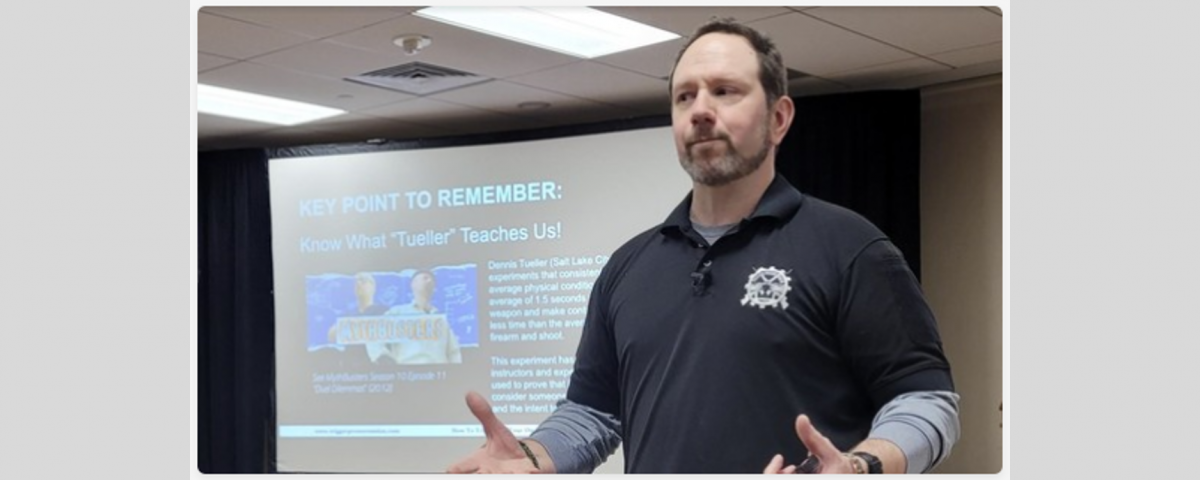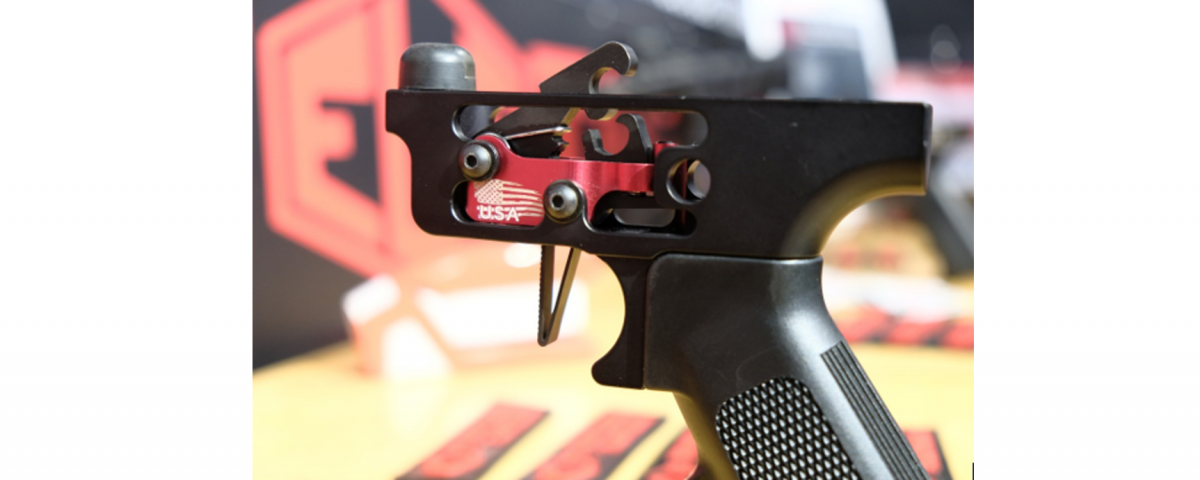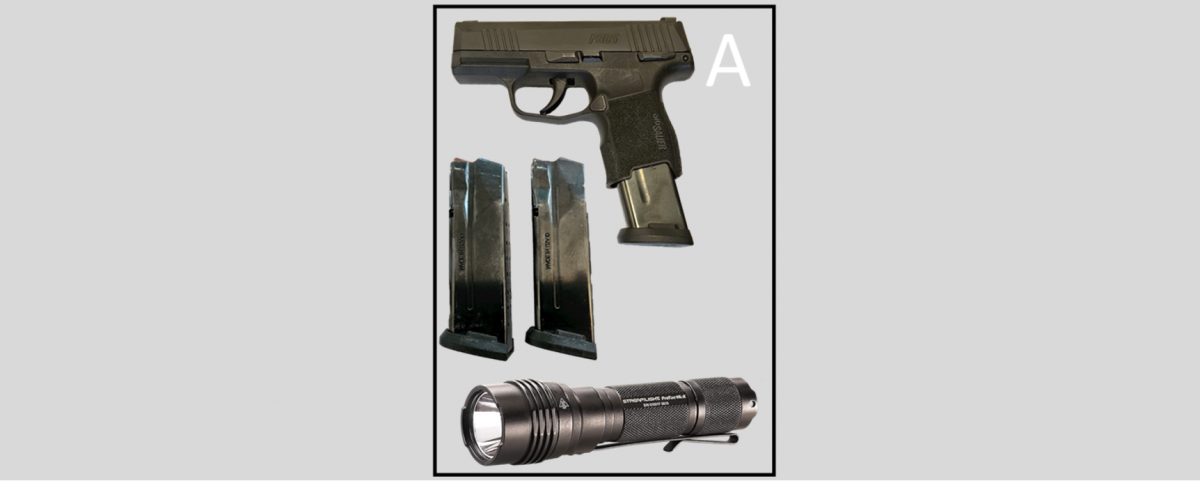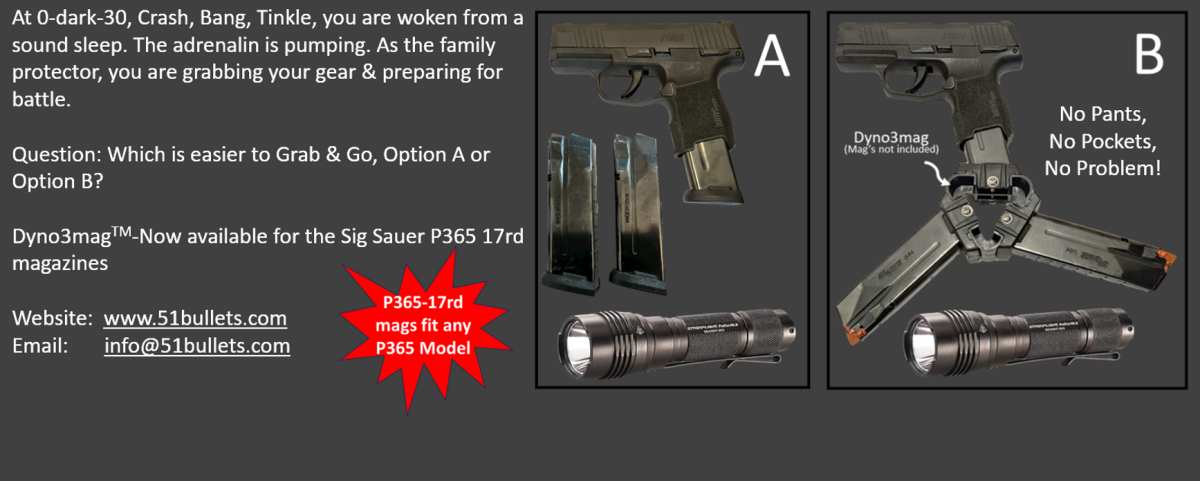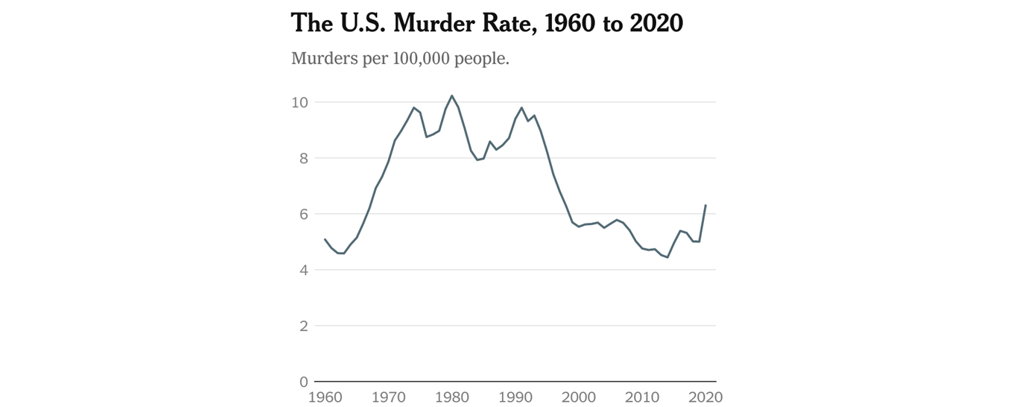December 2025
RODEOS
0
FOLLOWERS
 About frank
About frank
North Little Rock Arkansas United States
United States -
- Member since December 2025
Member since December 2025
view frank's company homepage
Hi. I'm frank.
37302 views
HOW TO TRAIN TO BE YOUR OWN FAMILY
HOW TO TRAIN TO BE YOUR OWN FAMILY FIRST RESPONDER
An excellent, must see video by Klint Macro.
To access the video, copy & paste the link into your browser:
https://bearingarms.com/john-petrolino/2024/02/17/test-n1223857
42629 views
Choosing the Best Trigger Trigger T
Choosing the Best Trigger: Trigger Types Explained
By Ed AKA “The Real Most Interesting Man in The World” LaPorta Published on January 17, 2024 in Firearm History
Link to the complete article: https://blog.cheaperthandirt.com/choosing-the-best-trigger-trigger-types-explained/?xnpe_tifc=bDnl4kQLbDHDhfYXxInJxypsafeWaeiWhFW_bu4XRdEsauE1VdP.hdpvbue3tu8sEyXXxfh.x.Vj4IUNOIo8xdb7&utm_source=bloomreach&utm_campaign=Chronicle%20012024&utm_medium=email
The omnipresent trigger on modern firearms is the key interface the operator has with his or her firearm, but most don’t really understand its importance. To properly address the trigger, let’s take a stroll down firearms memory lane and look at how triggers came to be — before we examine the all important interface.
We do know that in 1364, the metal hand cannon was developed, made, and adopted in Perugia, Italy. Those crazy, creative Italians are responsible for inventing so much cool stuff, aren’t they? Ferrari’s, Gina Lollobrigida, Sofia Loren… but I digress. I’m sure that the invention of the hand cannon must have went something like this: After a hard day of blowing stuff up and destroying castle walls with field cannons, Pasquale and his hommies are at the local bistro hammerin’ down some shooters… I know, but it’s a sickness that I have…
Anyway, Pasqua says, in Italian of course, but not to worry, I will translate… “Oh! man that was, like, so cool! Blowin’ stuff up today! But you know what would be really cool, like! If everybody had, like, their own cannon that was small enough that they could, like, carry it around and there would be, like, a thousand guys with 1,000, small cannons pointed anyplace they want instead of, like, 50 guys with only one cannon. Man that would be, like, sooo cool!” If you can’t tell he’s, like, a Valley guy.
Someone must have been listening, because as mentioned, the ‘hand gonne’ is credited as having been made in Perugia, Italy in 1364. Initially, however, it was not a great influence on the battlefield. It was a small man portable cannon with a touchhole (breach) for ignition. It was heavy, unwieldy, unsteady, and required that the user prop it on a stand. The user had to brace it with one hand against his chest, while trying to manipulate a lit rope (a slow match) with the tips of his fingers towards a touchhole on the barrel. Needless to say, the technique was extremely cumbersome, prone to inaccuracy, and not very efficient.
The first recorded use of a Hand Cannon in Europe is when it appeared on the field of battle during the reign of Edward III, where it only had an effective range of about 30 yards. It was a start, but clearly, something better was needed.
Trigger Time
As far as firing mechanisms go, the idea of using a trigger to activate a weapon was not a new invention, as they had been used in crossbows for centuries. It was only logical that the idea of the trigger should be adopted for firearms as well, and so the “Matchlock” was born. The Mahlock generally conforms to what a modern sporting rifle looks like.
Matchlocks have a wooded handle or stock that can be braced against the shoulder, aimed (really pointed) in the direction of the target, with a trigger protected by a guard. When the trigger was actuated, it moved the slow match that was held in a curved lever called a Serpentine or Cock to the touch hole to ignite the charge and fire the weapon. And so, the trigger was born as the principal actuator of a firearm.
It was so successful that matchlock technology stayed alive for a very long time. As a matter of fact, well into the 19th century, matchlock weapons were still being used in India, China, and Japan. There were even some records of rebels using matchlocks in East Timor well into the 20th century.
There were other improvements to the lock mechanisms, but in all of them, the trigger was only a release initiating the first action to occur. The next big leap in technology was the Flintlock. In the Flintlock, the pan holding the initial charge of powder is covered with a steel plate (a.k.a, the “frizzen”). When the trigger is pulled, it releases the hammer that falls under spring pressure to strike the frizzen. This action creates the sparks that initiate the firing sequence. So, the Flintlock’s trigger still functioned only as a release for the cock or hammer holding the flint.
Double Action
In 1835, Colonel Samuel Colt introduced the Paterson No. 1 Revolver with 5 chambers that rotated when the hammer was cocked to provide 5 shots on demand. As revolutionary as his invention was, the trigger was still single action and only released the hammer. However, things were about to change.
During the 1850s, another mechanism called the “Double Action” was invented. The inventor was Robert Adams, and he invented a revolver where pulling the trigger cocked the hammer, rotated the cylinder, and then released the hammer — all with a single (all be it longer) trigger pull. This means, it also has a harder trigger pull than a single-action revolver, much like the Colt and Smith & Wesson products of that period. On the other hand, the rate of fire was much higher than a single-action revolver, because the user doesn’t need to cock the hammer separately before pulling the trigger. The Adams revolver was a percussion cap firing mechanism, and the cylinder had 5 chambers in it.
What we just learned is that a single-action trigger is inherently lighter, requiring less force and movement to operate than a double-action trigger. This happens because the double action has a longer distance to move, more weight, and more resistance to overcome. And so, the appearance of the new, improved models of double action that could be operated in both single- or double-action mode was such a huge success that Samuel Colt had to shut down his factory in England. With that development, it came to be that mechanisms operating in both single- and double-action mode are called DA revolvers (DA standing for “double action”).
Trigger Pull
The term that defines the amount of force that is needed to cause the trigger to release in a firearm is referred to as “trigger pull.” If a firearm has a very light trigger pull (a.k.a. a hair trigger), it takes very little force to activate the trigger. Hair triggers are found on single actions because all the resistance to stage the firearm for firing has been accomplished by the shooter’s strength when “cocking” the mechanism.
The shooter either rotated the cylinder of a revolver by cocking the hammer or cycled the slide on a single-action pistol. On a bolt-action rifle, the bolt is cycled. On a lever-action, the lever is operated. The trigger pull weight on a single action can be as light as 2 ounces. Be advised, a trigger that is light also has a greater chance of accidentally discharging, for all the same reasons.
On the other hand, if a firearm has a heavy trigger pull, the user will not be able to shoot as rapidly or as accurately. This happens because the force required to pull the trigger will usually cause the user to shake, making the firearm move a bit more and be more difficult to hold on target. Most single-action triggers are normally set from 4 to 7 pounds.
Single- and Double-Stage Triggers
When we talk about rifle triggers, the first two that come to mind are the Single- and Double-Stage (2-stage) triggers. There is also the lesser used Set Trigger, in both single- and double-set, which we will cover later. The differences between the first two trigger types are minor but can make a significant impact on your performance.
It’s important to remember these differences, because as stated earlier, the trigger is the primary interface that connects you to your gun. Pressing the trigger is the last human action before the mechanics of your weapon take over. That said, both types of triggers work well in multiple applications, and it’s up to the individual shooter to choose which one works best for them. They’re both capable of accuracy and speed.
Timney Triggers provide you with a smooth, consistent and predictable trigger break. This trigger is set up with a 2-stage type trigger pull with a short 2lb first stage and a 2lb second stage.
Users of both types must familiarize themselves with the feel of the triggers before they can use them confidently. I use all three types of triggers and find they each excel at different shooting tasks. Whichever type of trigger you choose, so long as you are safe, accurate, and enjoy your time behind your rifle, you have selected the correct one. Keep in mind that the placement and design of the single-stage and double-stage triggers are not discernible to the eye. They’re located within the trigger guard, and their appearances are similar.
Single-Stage Triggers
Let’s start by looking at the single-stage trigger first. Today, most bolt-action sporting rifles come standard with a single-stage trigger. A single-stage trigger is designed to release the sear and fire the gun as soon as the trigger finger exerts enough pressure to release the sear. Single-stage triggers do not have a change in weight throughout the pull. Ideally, there is no slack, creep, take-up, or over travel with a single-stage trigger. This means that the once the sear is released, the trigger will not travel any further. Single-stage triggers are a bit more complex, but they can be adjusted to an individual shooter’s preference.
Double-Stage Triggers
Most shooters are familiar with double- or 2-stage triggers, because they have been traditionally encountered on mil
36677 views
Having more bullets than needed is
Having more bullets than needed is better than needing bullets you don’t have
www.51bullets.com
Do you change your vehicle oil at 7000 miles, instead of the recommended 10,000 miles? Do you keep a Fire Extinguisher on hand? How about filling your gas tank when it hits a quarter tank? These are all preventive measures to ensure long life of our vehicles, safety in our home, the ability to get out of dodge in a hurry if needed.
With preventive measures in mind, if you conceal carry, how many spare magazines do you carry & why? Do you carry extra mags because you expect a lot of trouble, the possibility of mechanical issues such as a weak mag spring, the possibility of dropping your spare mag in the mud, rendering it inoperative? The answer to all three for me would be yes. Let me elaborate.
Does expecting a lot of trouble sound a little hyperbolic to you? Perhaps it is, but in real life, we don’t know what to expect. You could be faced with a single assailant or multiple assailants. What we do know is that when the adrenaline is pumping, your shooting accuracy dramatically goes down. Couple that with multiple assailants, and you have a recipe for disaster if you don’t have loaded spare mags on hand.
The possibility of a weak mag spring is very real. Good quality mags have tempered springs, making the likelihood of this occurring very remote. However, if you conceal carry daily, your magazines are loaded for weeks on end. Being pragmatic, you may have extra mags, enabling you to rotate them out, giving the unloaded mag springs some time to relax. However, due to costs, not everyone has this option.
Is it possible for you to drop your spare mag into the mud? It certainly is. When the adrenaline is pumping, in a hurry to get our spare mag out of its carrier (typically attached to a belt carrier), we can get our hand caught up in clothing, resulting in a dropped or thrown spare mag. Extensive training, developing muscle memory in mag change-outs, can help you overcome this issue.
There are those who justify not needing extra mags by saying, “I only need 1 shot per perp”, or “the average defensive gun use only requires 3-5 bullets”. Good for you!
Personally, I am not willing to bet my life on bravado or averages. My philosophy is having more bullets than needed is better than needing bullets you don’t have.
25956 views
Why 10Round Limits Are a Terrible I
Why 10-Round Limits Are a Terrible Idea
By Tom Knighton | 6:29 PM on December 05, 2023
Sen. Chuck Schumer intends to put a new assault weapon ban bill on the Senate floor to vote on within the next week. Now, banning a type of firearm is a terrible idea in and of itself, one that’s already being challenged in the courts as we speak.
A 10-round limit is part of this measure, as it was with the ban back in 1994.
A lot of people favor such limits. They’ve been told that such a restriction will inhibit mass shooters but that no law-abiding citizen has a need for any more rounds than that.
Yet at American Thinker, writer Robert F. Turner debunks some of this thinking and talks about why a round limit is a terrible idea.
Only in Hollywood do people shot with a 9mm bullet immediately fall to the ground dead. People have been hit more than 20 times with such bullets and survived the experience. While homeowners generally do not wish to kill an intruder—or intruders, as home invasions and other violent crimes are often committed by multiple armed assailants—or anyone else, to be successful, they must act quickly to do whatever is necessary to end the threat. And doing that often requires multiple hits.
There is also a serious risk of repeatedly missing the target under the stress of a gunfight. A study of New York Police Department shootings between 1998 and 2006 revealed that trained police officers hit their targets under the stress of a gunfight 18% of the time. On average, that’s just under two hits with a 10-round magazine. And that includes superficial wounds that have little chance of incapacitating the criminal.
A similar study of 149 officer-involved shootings by the Dallas Police Department between 2003 and 2017 concluded that officers fired an average of 2.4 rounds in a typical gunfight and struck the suspect at least once 54% of the time. Half of the officers did not score a single hit when firing their handguns under such stress. A 2022 study reported in the International Journal of Environmental Research and Public Health cited these and other data while noting that “high anxiety,” like being involved in a gunfight, is “a trait known to negatively impact on marksmanship.”
Yet another study did the math, concluding that it takes 2.45 hits with a 9mm pistol on average to end a threat and 5.55 shots to make a hit. That adds up to 13.6 rounds fired on average to incapacitate an attacker, and that’s for just one attacker—which is hardly good news if you are trying to defend your family while limited to a 10-round magazine. (It is true that homeowners can carry more than one magazine, but when awakened in the middle of the night by an uncertain noise while wearing pajamas, the likelihood they would think to do so is slim. They may well want their second hand free for opening doors or carrying a flashlight.)
Go read the whole thing. There’s a lot of stuff there that makes a good point.
Then we have the matter that both with a renewed assault weapon ban and a round limit for our magazines, to say nothing of Sen. Angus King’s GOSAFE Act bill, is that all of these completely disregard the Bruen decision completely.
Remember the history text and tradition litmus test Justice Clarence Thomas laid down in Bruen. One must find a historic analog for restricting how many rounds a person could have. Especially when you consider that around the time the 14th Amendment was passed–another date Bruen said one can look for historic analogs–weapons carrying multiple rounds were growing more common. Revolvers had become the most common handgun and the Henry and Spencer repeating rifles had been used in the Civil War just prior.
They knew about them and didn’t pass round limits then, so it’s hard to argue that they’re justified now.
So we have the fact that criminals won’t be stopped from hurting people even if they can just get magazines that adhere to the round limit, that the round limit will make law-abiding citizens less safe, and that it’s not remotely constitutional.
But then again, how often are the people who want to limit magazine capacity really worried about the constitutionality of what they’re doing? All too often, they just want to pass the law. They don’t care if it survives or not.
Those of us whose lives get put at risk, though? We do care.
25564 views
Two Burglars Broke Into Armed Citiz
Two Burglars Broke Into Armed Citizen's Home. Only One Came Out Alive.
By Jeff Charles | 6:39 PM on December 03, 2023
A homeowner in Granada Hills, California, is still alive after confronting multiple home intruders with a firearm. The incident, which was reported by several different news outlets, is yet another example demonstrating why gun ownership is important – especially in a state with very strict restrictions on firearms.
The incident occurred early on Saturday morning.
A Granada Hills homeowner shot and killed one of two intruders during an early-morning home invasion Saturday, authorities said.
Officers responded about 5 a.m. to a report of a hot prowler in the 11400 block of Swinton Avenue, near Rinaldi Avenue, according to the Los Angeles Police Department.
One suspect was pronounced dead at the scene after being shot by the resident, the LAPD said. The other intruder fled and remained at large.
Police said the suspect pointed a weapon at the victim when the homeowner shot at them. Investigators believe another suspect was injured.
"There was a blood trail that trailed from the residence," said LAPD Deputy Chief Alan Hamilton. "We trailed it to the end but we believe there was at least one or two additional suspects involved in this burglary that left this scene."
The authorities noted that the homeowner’s grandmother and toddler were present during the home invasion. The suspects intended to burglarize the home and pointed a firearm at the homeowner, who quickly produced his firearm and managed to kill one of the intruders and wound the other. The other suspect has not yet been found by law enforcement.
--------------------------------------------------------------------------------------------------------------------------------------------------------------------
Here is a perfect example of why you should always carry a gun, even at home. If the homeowner had not been carrying, he would have been facing an armed assailant unarmed, without the means to protect his family. 51bullets.com
21907 views
GRAB N GO OR HOW DO I CARRY ALL THA
GRAB & GO OR HOW DO I CARRY ALL THAT
Hello fellow patriot.
When terror strikes, via a Home Invasion, being awakened at 0-dark-30 by the sound of breaking glass, a bashed in door, an alarm or barking dog, the adrenaline will be pumping. Most of us are not prepared for this. Advanced, live action, Tactical Training would better prepare us for such an event, but I would wager few home budgets allow for this.
So, do you sleep fully clothed, with your fully loaded gun in your IWB holster, spare mags safely secured in a belt compatible carrier, and a flashlight in a pocket? Yeah, I don’t either. In fact, many people prefer to sleep, hmm, let’s just say in none to minimal clothing.
In any case, you need to be prepared to do battle in short order, so that you can gather your spouse & kids into a pre-determined safe haven. How do you prepare, what do you carry, how do you carry everything & still have a free hand to herd the kids? These are decisions that should be made well in advance, but seldom are.
Stop! This article is not written to address the family protector who has extensive Tactical Training, having practiced magazine changeouts exhaustingly, and rules the lanes at your local Shooting Range. You likely have multiple full-sized handguns & loaded spare magazines, an AR, perhaps a Shotgun, and other defensive weapons staged throughout your house. You have a plan, have practiced it regularly with the family, and are as prepared as a person can be.
For the rest of us mere mortals, we need a simpler way to organize our defensive gun (assuming a handgun is the preferred tool for this) & mags, and preferably a method to simplify mag change-outs. This is where Dyno3magTM could help.
Dyno3mag (Magazines not included) is a tool intended to improve the odds of surviving a very stressful home defense situation, specifically geared towards gun owners who have little Tactical Training, especially in the art of magazine change-outs. The Dyno3mag puts 2 loaded spare magazines in your hand (+ 1 in the gun), with all the mag’s oriented facing forward, reducing the angst regarding where your spare magazines are, and how you will carry them & eliminates the possibility of accidentally inserting them into the handgun backwards. The Dyno3mag is also designed to require less motion & steps to change mag’s, making magazine changeouts simpler & more efficient to accomplish, while keeping your eyes on the assailant(s).
Our 1st product is a Dyno3mag for the Sig Sauer P365, the most successful Concealed carry handgun ever. The 17round mag was designed for the P365 X Macro and works in all P365 variants (where legally allowed). The Dyno3mag mounts (3) 17round magazines (with the flat base) together in an easy-to-handle assembly, weighing ~2lbs fully loaded. 12 & 15round magazines WILL NOT work in this version of Dyno3mag!
For more information, website: www.51bullets.com Email: info@51bullets.com
23476 views
Salon Says Guns Are Winning Why Tha
Salon Says 'Guns Are Winning.' Why That's a Good Thing
By Tom Knighton | 4:31 PM on November 22, 2023
Guns have been part of the American way of life since before this nation was this nation. The American people have had guns for hunting and self-defense as well as defending this land from foreign aggression all that time.
But some people are less than thrilled about this fact.
Today, marks the 60th anniversary of the assassination of JFK. In the wake of that murder, the Gun Control Act of 1968 was passed, in part to prevent someone like Lee Harvey Oswald from being able to get a gun in the manner in which he obtained it.
Yet over at Salon, they have a piece titled, “60 years after the assassination of JFK: The guns are winning.”
Since JFK’s murder, more Americans have died from civilian gunfire than the well over one million American soldiers killed in all of our wars, according to a flyer circulated by the Virginia Center for Public Safety back in January of 2016. A PolitiFact review of the claim noted that the federal Centers of Disease Control and Prevention analysis “of yearly gunfire deaths in the U.S. from 1968 to 2014” all added up to 1.5 million gun-related deaths, greater than the 1.4 million lost to armed conflict since the creation of the nation.
Between 2015 and 2020, the United States had an additional 237,000 gun deaths. In 2021, the United States set a record with 48,830 gun-related deaths, with 54 percent flagged as suicides and 43 percent as murders. Overall, that reflected a 23 percent spike since 2019, according to the Pew Research Center
It is sixty years after JFK’s murder and the guns are winning with the nation’s children and their families that are increasingly losing.
Maybe it’s just me, but if you’re going to look at total numbers since JFK’s assassination, particularly with regard to guns, then maybe we should look at trends from that time and not cherry pick things to look as scary as possible.
JFK was killed in 1963. The Gun Control Act followed five years later. Not an immediate reaction, to say the least, but looking at the provisions in that law makes it clear it was, in part, a response to the assassination.
And what happened immediately after JFK was killed and continued after the GCA was passed? The homicide rate increased.
That’s from the New York Times. What it shows is an increase in the homicide rate that spiked up in the aftermath of the Gun Control Act and continued to be sky high until the early 1990s and didn’t really get down to the early 1960s homicide rate until around 2010 or so.
During that time, we didn’t see a whole lot of gun control being passed. The Brady Bill was passed in 1993 and we had the now-sunset Assault Weapon Ban in 1994, but violent crime was already starting its downward trend, nearly 30 years after JFK’s assassination.
While the last few years have seen a spike in violent crime, that too is trending downward.
So what happened? Well, during that time period, we also saw the rise of concealed carry. States began empowering people to carry guns for their own protection and people started taking advantage of it. That likely contributed
The Assault Weapon Ban spurred a lot of people to buy AR-15s and similar weapons, creating a demand that still hasn’t been satiated. As these are good weapon for self-defense inside the home, this probably also contributed.
See, the issue with the Salon piece is that it’s blaming recent laws and recent actions from the last 30 years for violent crime that took place in the 30 years immediately after JFK’s death.
As guns have become more popular and people are carrying them more often, the homicide rate has trended downward. Even the spike of 2020 was nothing compared to the murder rates of the 1970s and ’80s.
So, in a way, the premise is right, even if not for the reason the author wants us to think. The guns really are winning. They’re making us safer.
The media might not make it seem that way, especially when you can see all the violence with a few keystrokes, but we’re much better off than we were shortly after JFK’s assassination, and I’m tired of pretending we’re not.
25644 views
Conceal CarryALWAYS
Conceal Carry-ALWAYS
I have been concealed carrying for about 6 years now. Inevitably, when discussing guns and such, family & friends have occasionally asked me how often I concealed carry. My answer has not changed in all the years…ALWAYS. I know, it sounds silly, and to some, a little paranoid. I am a gun enthusiast, not an NRA Instructor or PRO, so please regard my opinions accordingly.
Approximately 7 years ago, I bought my first handgun, a Smith & Wesson 9mm Shield. I practiced at the range & subsequently, applied for my concealed carry license in CA. I got it in about 4-1/2 months. Having a concealed carry license in CA is about as rare as finding a pink Rhinoceros.
To get comfortable with carrying, I started concealed carrying around the house, which was a new habit & felt weird. An integral part of concealed carrying you see, is not looking like you are, in fact, concealed carrying. To do that properly, besides having the right equipment & clothes, you MUST be comfortable with carrying a weapon. If not, you will be constantly checking to see where your weapon is, if it is showing (printing), if your pants are sagging, pushing your gun down into the holster to be sure it is in place, etc. These are all tells, for anyone paying attention, that you are concealed carrying a weapon. Like any new habit, it takes time & practice to get it right.
Home Invasions are another reason that I will always carry around the house. I see products available all the time, providing ways to hide a gun in the living room, bedroom, or other places. Clever ways to quickly retrieve your gun with a magnetic release are quite popular. Think about this-If an assailant(s) is breaking down your front door, how much time do you think you have to retrieve your gun? Go ahead & ponder on this, I will wait. BING, times up! Here is your answer. If you do not have a gun on your person, with a round chambered, you are unarmed! There is no time to run across the room, magnetically actuate your hidey hole & retrieve your gun. If you are not prepared to address the immediate danger, it is too late.
And finally, one last point-Children! (Truth be told, we don’t have any children in our house) They are very curious & like to touch things they shouldn’t. If your loaded gun is not in a safe, the only child-safe place for it to be is on your person (assuming you have a good quality IWB holster with a trigger guard & good retention). But then, if your loaded gun is in a safe, you are unarmed! Something to consider.
So, the lesson here is, always carry your gun wherever legally allowed. Eventually, it becomes a good habit, and will be just like carrying your wallet, keys, a flashlight, etc. You will forget you have them, but happy you did when needed.

